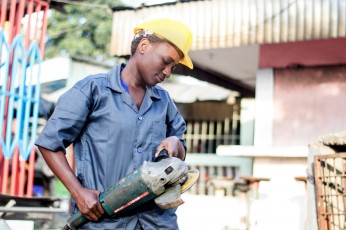



Throughout Baltimore, men and women, from young adults to older workers, are seeking meaningful employment opportunities that offer family-sustaining wages and support personal well-being. Labor markets are tight, meaning that skilled workers are in great demand. This presents a unique opportunity to open doors to quality jobs that provide a livable wage, basic benefits, and career building opportunities – particularly for those who have faced intractable barriers to such opportunity. Baltimore should consider rapid expansion of high-quality workforce development programs to assist job seekers in obtaining the skills they need.
In “Scaling Workforce Development Programming in Baltimore,” Linda Dworak of the Baltimore Workforce Funders Collaborative explores opportunities to scale up effective workforce development programming in Baltimore. In discussing scale, the report focuses on the expansion of comprehensive models that address opportunity gaps through the provision of in-demand occupational skills training, industry-recognized certification, intensive employer engagement, and supportive services to mitigate personal and systemic barriers to employment.
Currently, the 31 nonprofit organizations and community colleges interviewed for this report collectively provide industry sector-based workforce development services to approximately 2,700 job seekers per year. The skills training available is focused on 13+ industry sectors and more than 74 occupational titles. Most of these programs are relatively small, enrolling fewer than 100 individuals per year. However, many programs identified labor market forces pointing to current and projected job openings that could be filled by Baltimore residents through an expansion of programming.
The report finds an increased investment of $5 million over current funding levels to 16 organizations could rapidly increase the number of residents receiving occupational skills training, supportive services, and job placement by about 1,000 people annually.
To ensure that these programs are able to maintain quality as they increase in quantity, the report offers several recommendations that fall into three main categories:
In all of this work, practitioners and their partners must apply an equity framework to address the structural racism that is at the root of persistent poverty and labor market disconnect in the Baltimore region.
The report concludes that taking advantage of the high demand for skilled workers and connecting all of Baltimore’s residents to quality jobs requires policymakers, philanthropy, and private businesses come to commit resources, enabling individuals, communities, and high-quality workforce development training providers to seize upon a uniquely advantageous chance to succeed at greater scale.